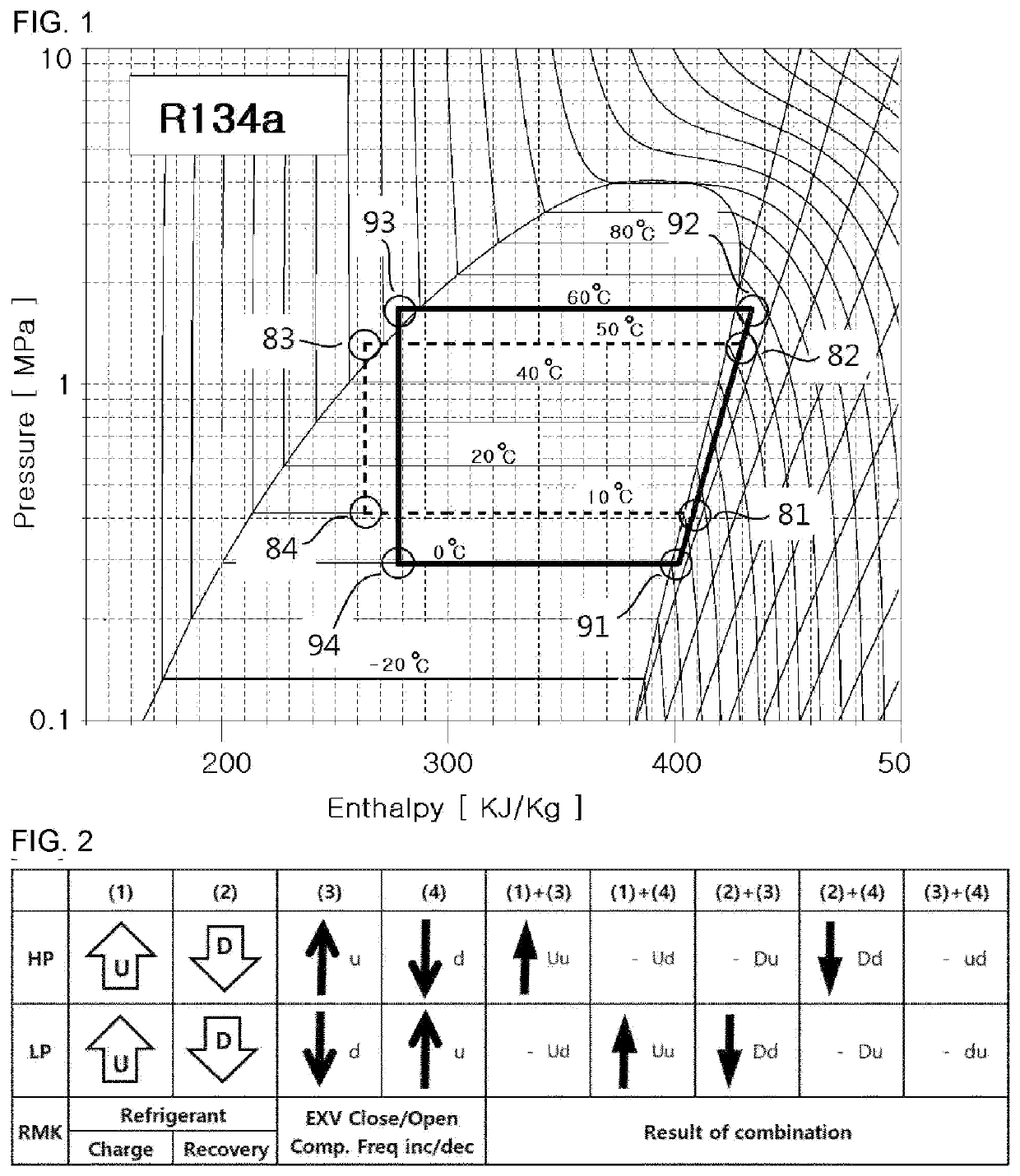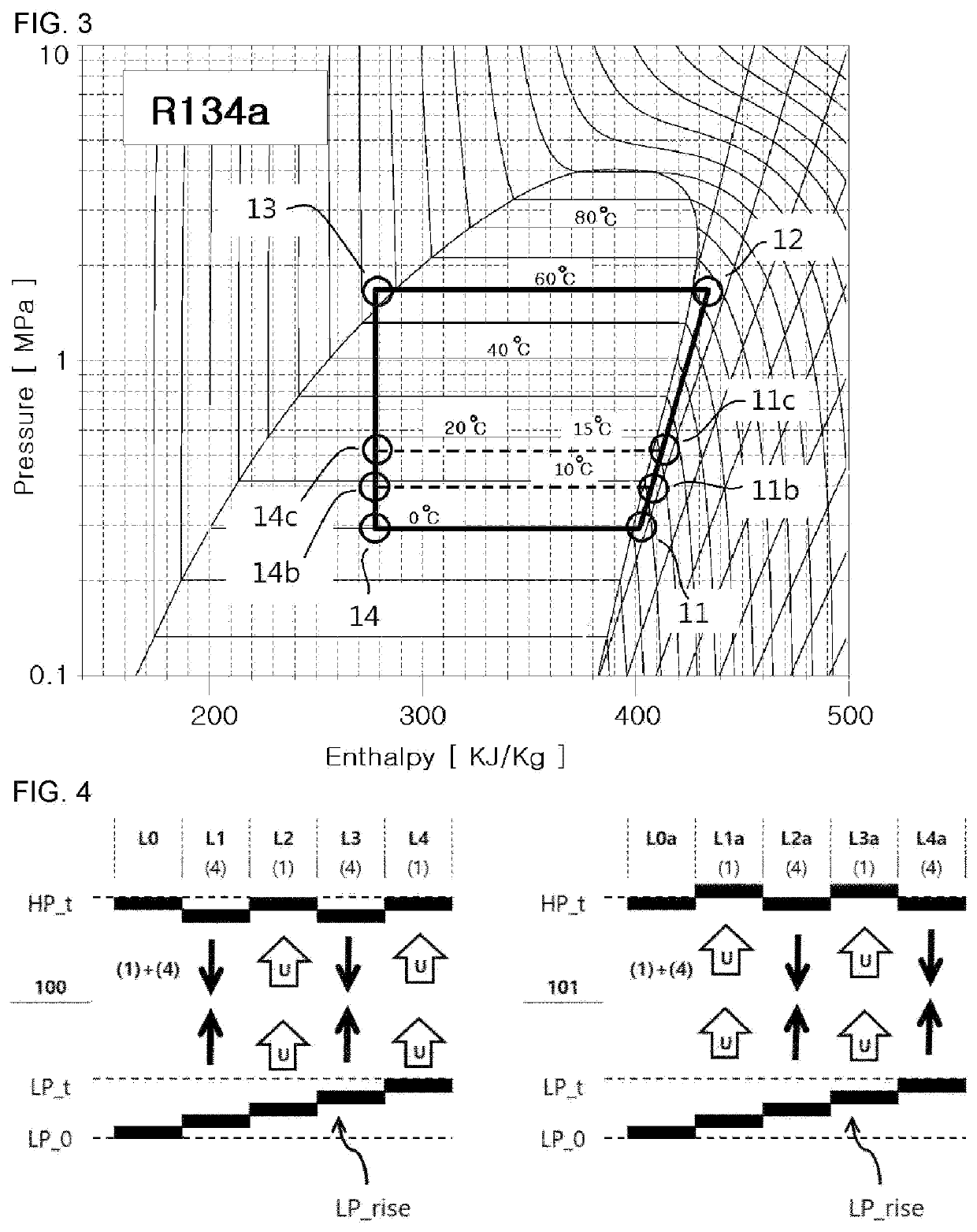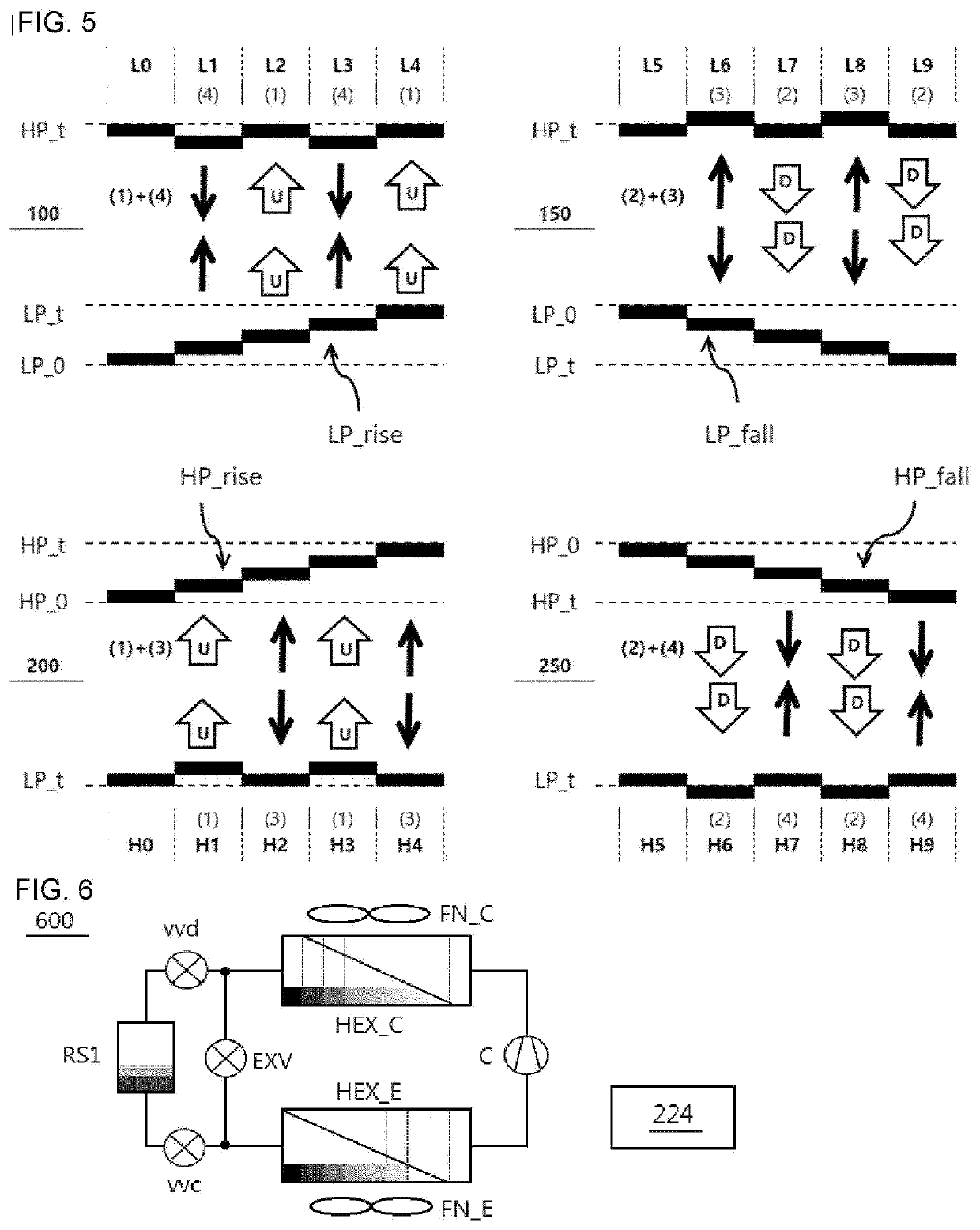Heat pump having improved efficiency
- Summary
- Abstract
- Description
- Claims
- Application Information
AI Technical Summary
Benefits of technology
Problems solved by technology
Method used
Image
Examples
first embodiment
[0050]Now, an embodiment (air conditioner cooling mode) of controlling the evaporation temperature to be higher in the heat pump according to the present invention will be described with reference to FIGS. 2 to 4.
[0051]FIG. 4 shows examples of a procedure for controlling the evaporation temperature of the evaporator to be higher. A control procedure 100 is a case of sequentially performing the fourth control (4) and the first control (1) twice. In the initial state L0, the controller sets the target low pressure (LP_t) higher than the current low pressure (LP_0) according to certain necessity. Then, the low pressure is different from the target value, and the controller performs the fourth control (4) so as to make the low pressure equal to the target value. As a result, the low pressure rises, and the high pressure falls, so that a state L1 is obtained. The evaporation temperature becomes higher because the low pressure rises as desired, but the condensation temperature becomes low...
second embodiment
[0072]Now, an example of a heat pump 600 adapted for the present invention will be described with reference to FIG. 6.
[0073]The heat pump 600 is configured by connecting a “circuit” including a compressor (C), a condenser (HEX_C), an expansion valve (EXV), and an evaporator (HEX_E) through a closed refrigerant line. In addition, a refrigerant storage tank (RS1) is installed in parallel with the expansion valve (EXV). Between the inlet of the expansion valve (EXV) and the inlet of the tank (RS1), a recovery valve (vvd) for recovering the refrigerant from the “circuit” is installed. Also, between the outlet of the expansion valve (EXV) and the outlet of the tank (RS1), a charging valve (vvc) for charging the refrigerant to the “circuit” is installed. Hereinafter, the refrigerant storage tank (RS1), the recovery valve (vvd), and the charging valve (vvc) will be collectively referred to as “refrigerant (charging) amount adjusting means (RAAM)”.
[0074]Hereinafter, an example of charging t...
third embodiment
[0081]Now, an example of a method for controlling a cooling mode in the heat pump 600 adapted for the present invention will be described with reference to FIG. 6. The circuit configuration of the heat pump 600 has been described above and thus will be omitted. In the present invention, a controller 224 preferably includes the following first to seventh roles.
[0082]1) Variable Capacity Compressor Control: The controller 224 controls the compressor (C) to compress the set amount of refrigerant per unit time (g / s). The compression amount (g / s) can be calculated by referring to the cooling load. In case of the inverter compressor (C), it operates at a frequency set in response to the load. If the low pressure and super-heating degree (SC) are kept constant, the density of the refrigerant is constant under that condition, and thus the amount of refrigerant per unit time (g / s) compressed by the compressor (C) will be calculated for each driving frequency (hereinafter, “refrigerant compre...
PUM
 Login to View More
Login to View More Abstract
Description
Claims
Application Information
 Login to View More
Login to View More - R&D
- Intellectual Property
- Life Sciences
- Materials
- Tech Scout
- Unparalleled Data Quality
- Higher Quality Content
- 60% Fewer Hallucinations
Browse by: Latest US Patents, China's latest patents, Technical Efficacy Thesaurus, Application Domain, Technology Topic, Popular Technical Reports.
© 2025 PatSnap. All rights reserved.Legal|Privacy policy|Modern Slavery Act Transparency Statement|Sitemap|About US| Contact US: help@patsnap.com



